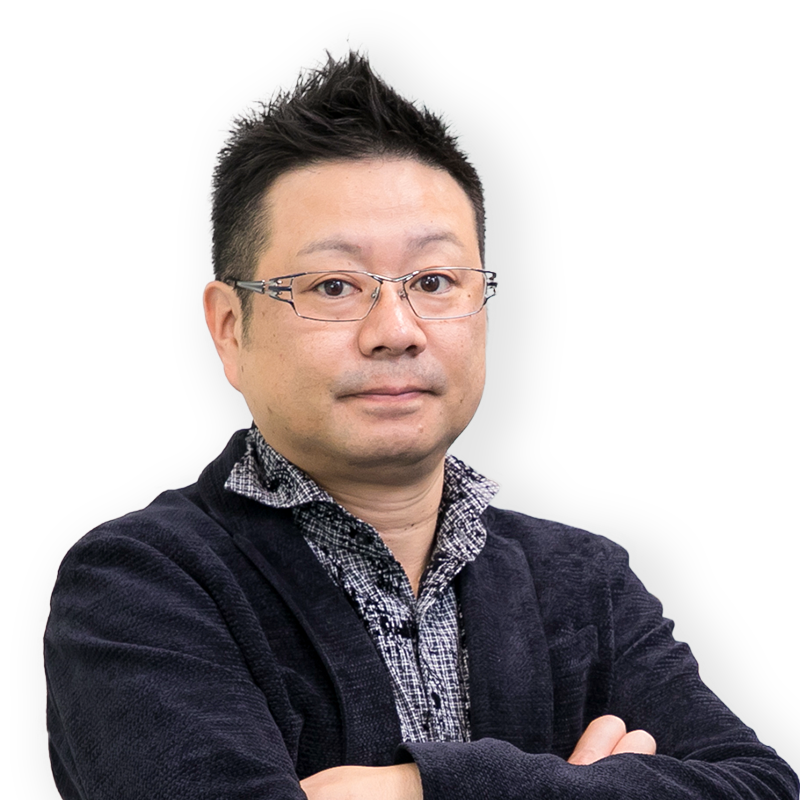Closing the divide between departments and optimizing project performance
One of my key responsibilities involves supervising the technical artists (TA), who play a crucial role in bridging the gap between our artists and programmers, building game development tools and production pipelines. Their impact of their work extends beyond individual projects, as the tools and resources they create have the potential to significantly enhance the productivity of multiple projects. Take the process of creating assets on a game engine, for example. TAs build tools that can simplify the asset creation process, allowing artists and programmers to work more efficiently. I myself have had many chances to create tools or artwork to meet our needs.
I initially joined SEGA as an artist. At the time, SEGA was working on multiple groundbreaking game platforms. I saw it as an opportunity to apply my self-taught CG art skills and polish my technical abilities. A few years after joining, I was transferred to a department that made in-house development libraries. I learned programming there and have remained in the department ever since.
Striving for an environment that allows each individual to maximize their potential
In order to identify where we can improve productivity, it's important for us to have an understanding of the struggles that each member faces in their daily tasks. When you're swamped with work and only have time to concentrate on your immediate tasks, it becomes challenging to articulate or even recognize areas that require improvement. Programmers and artists, in particular, have different ways of approaching their tasks, so it's very easy for miscommunications to happen.

That's why we need to improve our coordination. Whenever we receive a request for a new tool, we conduct an on-site assessment of everyone's work. Following that, once we have assessed how we can optimize their operations, we recommend a tool that would suit their workflow and proceed to integrate it within the team.
Throughout my time at SEGA, I've always placed a high priority on building rapport and improving the environment. As skilled and talented as our staff are, a positive and encouraging environment is necessary to help them flourish. I also try to make an effort to listen to any concerns they might have.
The most gratifying part of the job is hearing how a tool I've built has made life easier for one of my colleagues or how it's sped up their tasks. My role also enables me to stay informed about the many different projects currently in development and puts me in contact with some exceptionally talented individuals. Additionally, it brings me great joy to see my team members being praised by other departments.
Using SEGA's wealth of resources to enhance collaboration and efficiency
While I belong to one division, I am often in communication with various divisions and project teams. SEGA has a wealth of human resources and projects. Someday, I'd like to create a system to coordinate our TAs so that they can propose ways to boost the productivity of all our divisions.
In my opinion, SEGA's greatest asset is its incredible size and the impressive range of projects that it offers. Wouldn't you like to be involved in developing globally recognized games, each with their own unique game engines? I'm absolutely certain that you won't find this experience anywhere else.

9:40 AM Arrive at the office and check yesterday's and today's tasks.
10:00 AM Conduct tests to determine whether newly created tools function properly or need adjustments.
10:30 AM Morning meeting with my team members about our tasks and issues.
11:00 AM Brainstorm corrective measures for any reported technical issues that our tools have over Teams.
12:00 PM Break for lunch. I can never make up my mind between all the options available at the cafeteria or the food trucks.
1:00 PM Meet with a team member to check the specs of a tool they're making, then settle on what needs to be made.
2:00 PM Attend project meeting and confirm progress of tasks.
3:00 PM Continue correcting any reported issues. Test out new scripts when issues arise.
5:00 PM Attend an interdepartmental meeting for the TAs to share information with one another.
5:30 PM Check the tools currently in development within our team.
6:00 PM Design an icon for the application we're developing.
6:30 PM Draft my daily report and reply to any emails and chat messages. I try to wrap up work at a convenient time. I'll often stop by the gym after!

STAFF INTERVIEWS



























